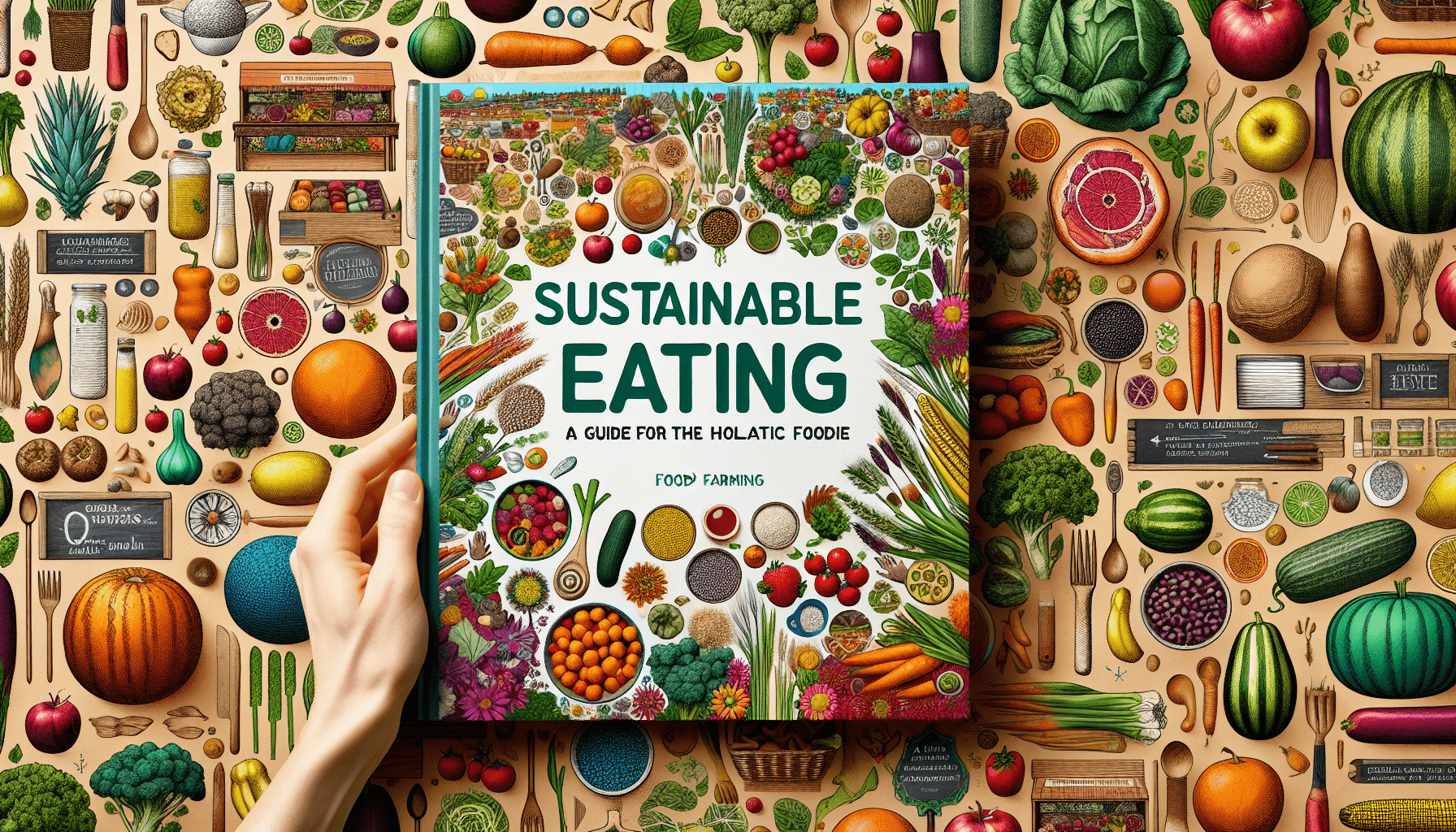Are you a health-conscious individual who loves indulging in delicious and nutritious meals? Look no further! In this article, we present to you “Sustainable Eating: A Guide for the Holistic Foodie.” Discover the secret to aligning your love for food with your commitment to the environment. From understanding the importance of sustainable agriculture to exploring mindful eating practices, this guide will empower you to make informed choices that benefit both your well-being and the planet. Get ready to embark on a journey towards sustainable eating that will nourish your body and satisfy your taste buds!
Understanding Sustainable Eating
What is sustainable eating?
Sustainable eating is a way of making conscious food choices that consider the long-term impact on the environment, animal welfare, and human health. It goes beyond just focusing on nutrition or personal preferences. Sustainable eating encompasses a holistic approach that takes into account the social, economic, and environmental aspects of food production and consumption.
Why is it important?
Sustainable eating is crucial because it addresses some of the most pressing challenges we face today. By choosing sustainable eating habits, you are actively contributing to the preservation of our planet and its resources. This means reducing greenhouse gas emissions, conserving biodiversity, and minimizing the use of harmful chemicals in farming practices. Moreover, sustainable eating promotes ethical treatment of animals and supports local communities and economies. As an individual, your choices have the power to create positive change and shape a more sustainable future for all.
Benefits of sustainable eating
The benefits of sustainable eating are far-reaching and diverse. First and foremost, it promotes personal health and well-being. By choosing whole, nutrient-dense foods and minimizing the consumption of processed and highly packaged products, you can improve your overall nutrition and reduce the risk of chronic diseases. Additionally, sustainable eating can help reduce food waste and save money by prioritizing seasonal and local ingredients. Moreover, it allows you to connect with your food, appreciate its origins, and experience the joy of cooking and sharing meals with loved ones. Ultimately, sustainable eating provides a sense of empowerment and fulfillment, knowing that your choices align with your values and contribute to a better world.
Choosing Local and Seasonal Foods
Importance of choosing local and seasonal foods
Choosing local and seasonal foods is a cornerstone of sustainable eating. By doing so, you support local farmers and reduce the carbon footprint associated with transporting food long distances. Local and seasonal foods are typically fresher and have higher nutritional value since they are harvested at their peak ripeness. Additionally, by consuming food that is grown locally, you help preserve traditional farming practices and protect biodiversity, which is essential for a healthy ecosystem.
How to find local and seasonal foods
Finding local and seasonal foods has become easier with the increasing popularity of farmers’ markets and community-supported agriculture (CSA) programs. Visit your local farmers’ market to connect directly with local growers, learn about seasonal produce, and support your community. Joining a CSA allows you to receive a weekly or monthly share of the farm’s harvest, ensuring a regular supply of fresh, seasonal produce. Additionally, many grocery stores now indicate the origin of their products, making it easier to choose local options. Lastly, consider growing your own food at home, even if it’s just a few herbs or vegetables in pots on your windowsill.
Benefits of consuming local and seasonal foods
Consuming local and seasonal foods provides numerous benefits. Firstly, you can enjoy the freshest and most flavorful produce when it is in season, enhancing the taste and quality of your meals. Local foods also tend to have a higher nutrient content since they are allowed to fully ripen before harvesting. By supporting local farmers, you contribute to the local economy and foster community resilience. Additionally, purchasing local and seasonal foods often reduces packaging waste associated with imported or processed foods, further minimizing your environmental impact. Lastly, connecting with local food sources allows you to develop a deeper appreciation for the food you eat and the people who produce it.
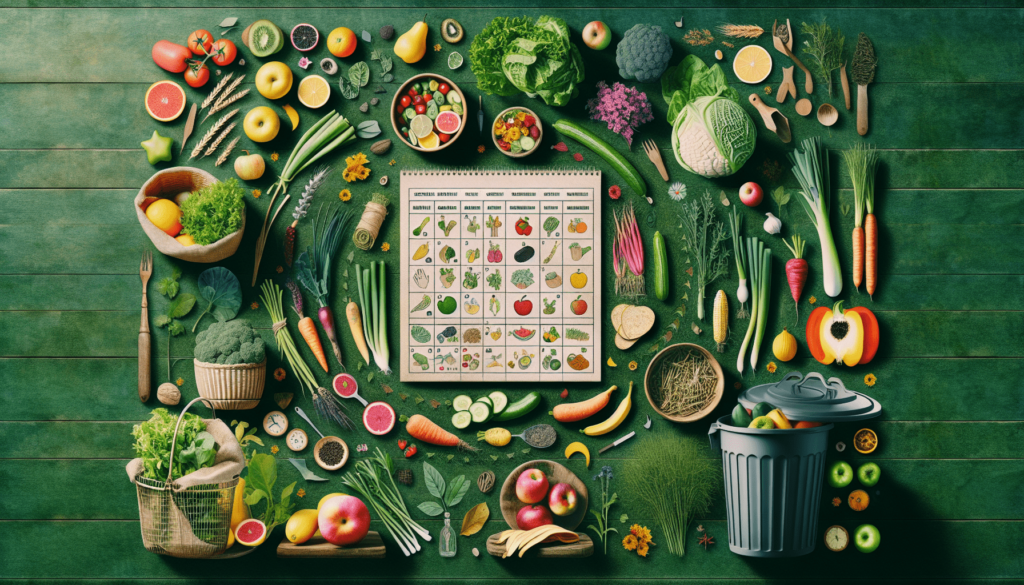
Reducing Food Waste
Understanding the impact of food waste
Food waste is a global issue with significant social, economic, and environmental consequences. When food is wasted, all the resources used in its production, such as water, energy, and land, are also wasted. Furthermore, decomposing food in landfills produces methane, a potent greenhouse gas that contributes to climate change. In a world where millions of people suffer from hunger, reducing food waste is not only ethical but also essential in creating a more sustainable food system.
Tips for reducing food waste at home
Reducing food waste starts at home, and there are several simple yet effective strategies you can adopt. Firstly, plan your meals and create a shopping list to avoid buying more than you need. Store food properly to maintain freshness and extend its shelf life. This includes utilizing your freezer, using airtight containers, and understanding expiration dates. Additionally, embrace the concept of “nose-to-tail” or “root-to-stalk” cooking, which involves using the entire ingredient, including parts that are commonly discarded. Finally, be mindful of portion sizes when cooking and eating. Start with smaller portions and go back for more if needed, reducing the likelihood of plate waste.
Creative ways to use food scraps
Food scraps can be transformed into delicious meals and reduce waste in the process. Vegetable ends and peels can be used to make flavorful vegetable broth, while fruit scraps can be turned into smoothies or used to infuse water for a refreshing beverage. Stale bread can be transformed into breadcrumbs or croutons, and overripe bananas are perfect for baking banana bread or muffins. Get creative in the kitchen and experiment with different recipes and techniques to make the most of your food scraps. Not only will you reduce waste, but you’ll also discover new flavors and culinary possibilities.
Embracing Plant-Based Diet
Benefits of a plant-based diet
Embracing a plant-based diet, or incorporating more plant-based meals into your routine, offers a range of benefits for both individuals and the planet. From a health perspective, plant-based diets are rich in fiber, vitamins, and minerals while being naturally low in saturated fats and cholesterol. This can contribute to a reduced risk of heart disease, obesity, and certain types of cancer. Additionally, plant-based diets are generally more sustainable since they require fewer resources and produce fewer greenhouse gas emissions compared to animal-based diets. The ethical aspect of choosing a plant-based diet lies in minimizing harm to animals and promoting compassionate choices.
How to incorporate more plants into your meals
Incorporating more plants into your meals can be an exciting and creative journey. Start by exploring a wide variety of fruits, vegetables, whole grains, legumes, nuts, and seeds and experiment with different flavors and cooking techniques. Aim to make plants the focal point of your plate, rather than just a side dish. For example, build your meals around colorful salads, hearty grain bowls, or veggie stir-fries. Incorporate plant-based proteins such as tofu, tempeh, or beans into your favorite recipes. Additionally, try plant-based alternatives for common animal-based ingredients, such as nut milk instead of dairy milk or chickpea flour in place of eggs. Be open-minded and have fun with your culinary adventures!
Plant-based alternatives to common foods
The growing popularity of plant-based diets has led to a surge in delicious and innovative plant-based alternatives for common animal-based foods. Whether you’re looking to reduce your meat consumption or eliminate animal products altogether, there are numerous options available. Plant-based burgers, sausages, and meat alternatives made from ingredients like soy, pea protein, and mushrooms have become increasingly popular and provide similar textures and flavors. Dairy-free milk alternatives made from soy, almond, oat, or coconut can be used in place of regular milk in recipes or enjoyed on their own. Vegan cheeses made from nuts or plant-based proteins offer a cruelty-free alternative for cheese lovers. The key is to explore different brands and products and find the ones that best suit your preferences and dietary needs.
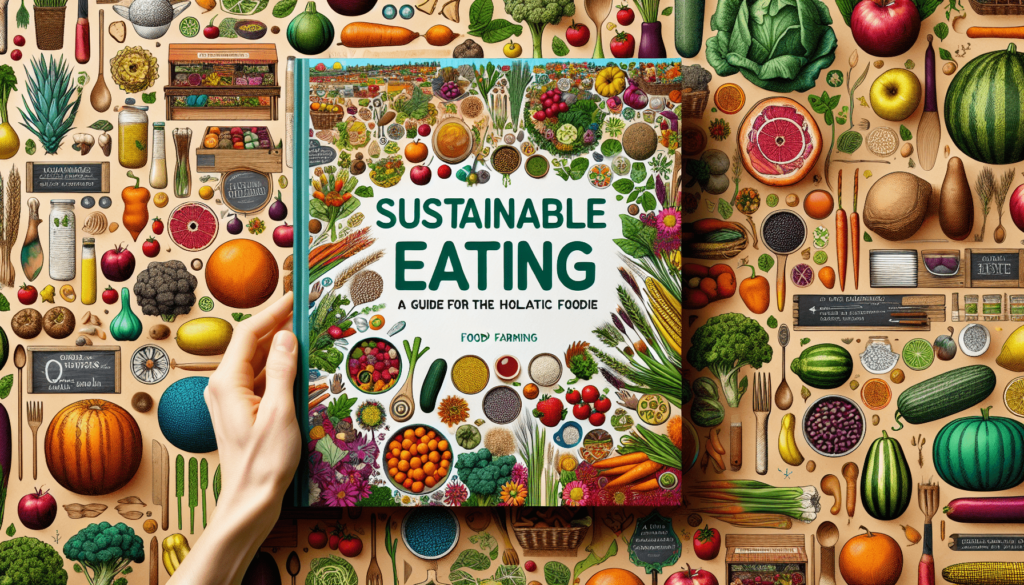
Opting for Organic and Sustainable Ingredients
Distinguishing organic and sustainable ingredients
Choosing organic and sustainable ingredients can have a significant impact on both human health and the environment. Organic ingredients refer to those that are grown without the use of synthetic pesticides, fertilizers, genetically modified organisms (GMOs), or irradiation. This ensures that the food is produced in a more natural and environmentally friendly manner. Sustainable ingredients encompass a broader perspective and consider the entire life cycle of the product, including factors like water usage, biodiversity, and fair labor practices. Opting for both organic and sustainable ingredients allows you to prioritize both your well-being and the planet.
How to source organic and sustainable ingredients
Sourcing organic and sustainable ingredients can be accomplished through various channels. Look for products that are certified organic by reputable organizations, as these have met stringent standards for organic production. Shopping at local farmers’ markets or joining a CSA provides an opportunity to connect directly with farmers who frequently follow organic and sustainable practices. When purchasing packaged foods, read labels carefully for certifications such as USDA Organic or Fair Trade. Another option is to grow your own organic ingredients, either in a small garden or even in pots on a balcony or window ledge. This allows you to have full control over the quality and sustainability of your ingredients.
Benefits of using organic and sustainable ingredients
Using organic and sustainable ingredients offers numerous benefits. Firstly, organic foods are often richer in nutrients and free from potentially harmful chemicals, promoting better health for individuals and the environment. By choosing organic and sustainable ingredients, you support farming practices that prioritize soil health, water conservation, and biodiversity. These practices protect ecosystems, preserve natural resources, and contribute to mitigating climate change. Additionally, opting for organic and sustainable products helps create a market demand for these practices, encouraging more farmers and producers to adopt sustainable methods. Overall, using organic and sustainable ingredients aligns with the principles of sustainable eating and contributes to a healthier planet for future generations.
Ethical and Responsible Animal Product Consumption
Understanding the impact of animal agriculture
Animal agriculture has significant social and environmental implications. It contributes to deforestation, water pollution, and greenhouse gas emissions, making it a major driver of climate change. Additionally, intensive animal farming practices often involve inhumane conditions and disregard for animal welfare. Recognizing the impact of animal agriculture is crucial in making informed choices about the animal products we consume and seeking alternative options that align with our values.
Choosing ethical and responsibly sourced animal products
If you choose to consume animal products, opting for ethically and responsibly sourced options is essential. Look for labels such as “certified humane” or “animal welfare approved” when purchasing meat, poultry, or eggs. These certifications ensure that the animals were raised under humane conditions and had access to outdoor spaces, fresh air, and a natural diet. Supporting local farmers who practice sustainable and ethical animal farming is another way to ensure the welfare of animals. Additionally, consider reducing your overall consumption of animal products and exploring plant-based alternatives that replicate the flavors and textures of animal-based foods.
Alternatives to animal products
Choosing plant-based alternatives to animal products is a sustainable and ethical choice that can have a positive impact on the environment and animal welfare. Advancements in food technology and innovation have led to the development of a wide range of plant-based alternatives that closely mimic the taste, texture, and nutritional profile of meat, dairy, and eggs. Plant-based milk, cheese, yogurt, and ice cream are now widely available in grocery stores, often made from ingredients like soy, almonds, coconuts, or oats. Meat alternatives, such as tofu, tempeh, seitan, or jackfruit, offer satisfying and delicious options for burgers, stir-fries, or sandwiches. Experimenting with these alternatives can open up a whole new world of flavors and culinary experiences while reducing your ecological footprint.
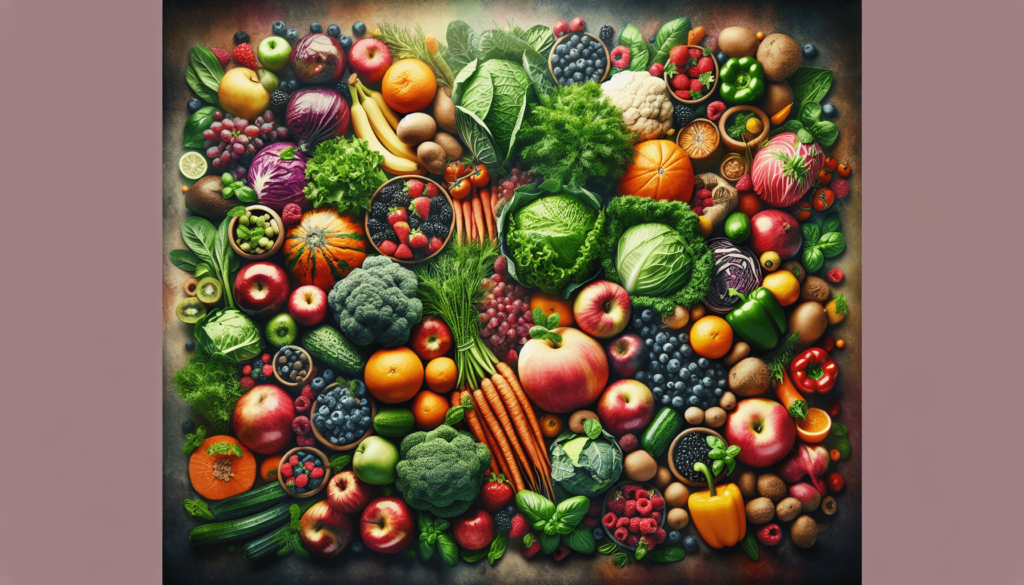
Reducing Single-Use Plastics
The problem with single-use plastics in the food industry
Single-use plastics have become increasingly prevalent in the food industry, creating a significant environmental crisis. These plastics, including packaging, cutlery, straws, and food containers, contribute to pollution in our oceans and landfills, posing a threat to marine life and ecosystems. Moreover, the production and disposal of these plastics contribute to greenhouse gas emissions and deplete natural resources. Reducing single-use plastics is essential in creating a more sustainable and waste-free food system.
Tips for minimizing single-use plastics when grocery shopping
Minimizing single-use plastics while grocery shopping requires conscious choices and planning. Start by bringing your own reusable shopping bags and produce bags to the store. Opt for items with minimal or no packaging, such as fresh fruits and vegetables, or choose products packaged in materials that are recyclable or biodegradable. Consider buying in bulk to reduce packaging waste and bring your own containers for deli items or bulk purchases. Look for stores that offer refill stations for cleaning and personal care products, allowing you to reuse containers instead of purchasing new ones. Lastly, avoid single-use plastic water bottles by carrying a reusable water bottle with you wherever you go.
Alternative eco-friendly options
Luckily, there are numerous eco-friendly alternatives to single-use plastics that can be incorporated into our daily lives. Reusable cloth bags or mesh produce bags are a great alternative to plastic bags for shopping. Stainless steel or glass food containers are excellent options for storing leftovers or packing lunches, eliminating the need for plastic wrap or disposable containers. Stainless steel or bamboo cutlery sets can replace disposable plastic utensils when eating on the go. Additionally, investing in a reusable water bottle and coffee cup can significantly reduce the consumption of single-use plastic bottles and cups. These small changes can make a big difference in minimizing plastic waste and promoting a more sustainable lifestyle.
Supporting Local Farmers and Food Producers
Importance of supporting local farmers and food producers
Supporting local farmers and food producers is a key aspect of sustainable eating. By purchasing directly from local sources, you contribute to the vitality and economic resilience of your community. Local farmers often employ sustainable and environmentally friendly practices, such as organic farming or regenerative agriculture, which helps preserve soil health and biodiversity. Moreover, buying local reduces the carbon footprint associated with long-distance transportation and supports a more resilient and decentralized food system.
How to find and buy from local sources
Finding and buying from local sources has become easier in recent years, thanks to the increasing availability of farmers’ markets, farm-to-table restaurants, and online platforms that connect consumers with local producers. Begin by researching farmers’ markets in your area and make it a habit to visit regularly. Engage in conversations with the farmers and learn about their growing practices and values. Joining a CSA program allows you to receive a regular supply of locally sourced produce and build a relationship with the farmer. Many communities have online directories or apps that provide information on local food sources and support local businesses. By putting in a little effort, you can uncover a treasure trove of local food options and forge connections with the people who grow your food.
Benefits of supporting local food systems
Supporting local food systems carries numerous benefits for individuals, communities, and the environment. Firstly, consuming local food means you are eating fresher produce since it doesn’t have to travel long distances. This often translates into more flavorful and nutrient-dense meals. By directly supporting local farmers, you are helping to preserve agricultural land and promote sustainable farming practices. This, in turn, contributes to soil health, water conservation, and biodiversity. Supporting local food systems also strengthens the local economy, creating job opportunities and fostering community resilience. Furthermore, buying locally reduces your carbon footprint and contributes to mitigating climate change by minimizing the energy required for transportation. Ultimately, supporting local food systems allows for a closer and more meaningful connection with your food and the people who produce it.
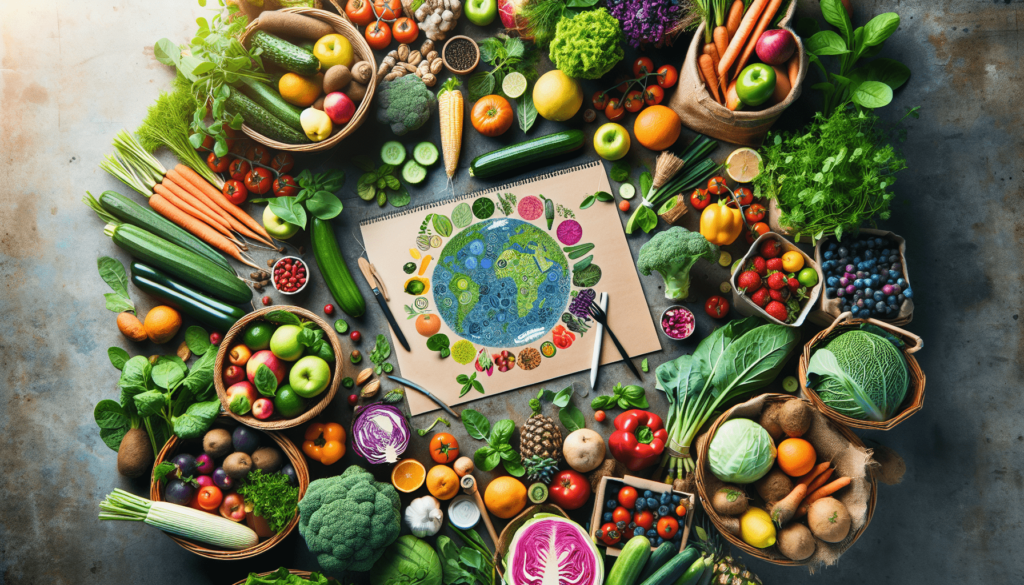
Growing Your Own Food
Benefits of growing your own food
Growing your own food is a rewarding and empowering experience that offers numerous benefits. Firstly, it allows you to have full control over the quality and safety of the food you consume. You can choose to grow your produce organically, free from harmful pesticides and synthetic fertilizers. Additionally, homegrown fruits, herbs, and vegetables often taste superior to store-bought varieties since they can be harvested at peak ripeness. Cultivating a garden also promotes physical activity and relaxation, providing a natural form of stress relief. Furthermore, growing your own food reduces your environmental impact by minimizing the need for transportation and packaging. Engaging in home gardening can foster a sense of self-sufficiency and reconnect you with the natural world.
Getting started with a home garden
Starting a home garden, no matter the size, is accessible to everyone, regardless of their level of experience or space available. Begin by assessing the available sunlight in your space, as most plants require at least six hours of sun per day. If you have limited outdoor space, consider container gardening on a balcony, patio, or windowsill. Choose plants that are well-suited to your climate and grow well in your particular region. Begin with easy-to-grow plants like herbs, salad greens, tomatoes, or peppers. Educate yourself on basic gardening techniques, such as soil preparation, watering, and pest management. Ensure you have the necessary tools and supplies, including good-quality soil, pots or raised beds, and seeds or starter plants. Finally, be patient and enjoy the process, as gardening is a journey of learning and growth.
Tips for successful home gardening
Successful home gardening requires some knowledge and attention to detail. Start by preparing your soil properly, ensuring it is well-draining and nutrient-rich. Consider composting your kitchen scraps to create organic fertilizer for your garden. Water your plants consistently, being mindful of their individual water requirements. Regularly monitor for pests and take necessary measures to control them, either through organic pest control methods or by creating a balanced ecosystem that attracts beneficial insects. Harvest your produce at the right stage of ripeness to maximize flavor and productivity. Finally, practice crop rotation and succession planting to maximize space and yield. Gardening is a process of trial and error, so don’t be discouraged by setbacks and embrace the learning experience.
Educating and Spreading Awareness
Importance of educating others about sustainable eating
Educating others about sustainable eating is crucial for creating widespread change and fostering a more sustainable food system. By sharing knowledge and information, you empower individuals to make informed decisions about their food choices and understand the impact those choices have on the environment, animal welfare, and human health. Education helps dismantle myths and misconceptions surrounding sustainable eating and encourages critical thinking and conscious consumerism. It also raises awareness about the interconnectedness of our food choices with broader environmental and social issues. By engaging in dialogue and fostering understanding, you can inspire others to join the movement towards sustainable eating and contribute to positive change.
Ways to spread awareness in your community
There are numerous ways to spread awareness about sustainable eating in your community and inspire others to make conscious food choices. Start by leading by example and embodying sustainable eating in your own life. Share your journey, experiences, and tips through social media, blogs, or local publications. Consider organizing workshops, webinars, or cooking demonstrations focused on sustainable and plant-based eating, inviting experts or local chefs to contribute. Engage with local community centers, schools, or organizations to collaborate on educational programs or events. Utilize social networks and online platforms to connect with like-minded individuals and share resources and information. Engaging in conversations with friends, family, and colleagues can also be an effective way to spread awareness and encourage small changes that collectively make a big difference.
Joining or starting sustainable eating initiatives
Joining or starting sustainable eating initiatives in your community can have a significant impact on promoting sustainable food practices. Look for existing initiatives or organizations working towards sustainable food systems and become an active participant or volunteer. This may include community gardens, food cooperatives, or advocacy groups focused on sustainable agriculture, food justice, or animal welfare. Such initiatives often provide opportunities to learn, connect with like-minded individuals, and contribute to collective efforts in creating a more sustainable future. If there are no existing initiatives in your area, consider starting one yourself by gathering a group of passionate individuals and developing objectives, action plans, and strategies to promote sustainable eating in your community. Remember, even small initiatives can have a ripple effect and create positive change.

